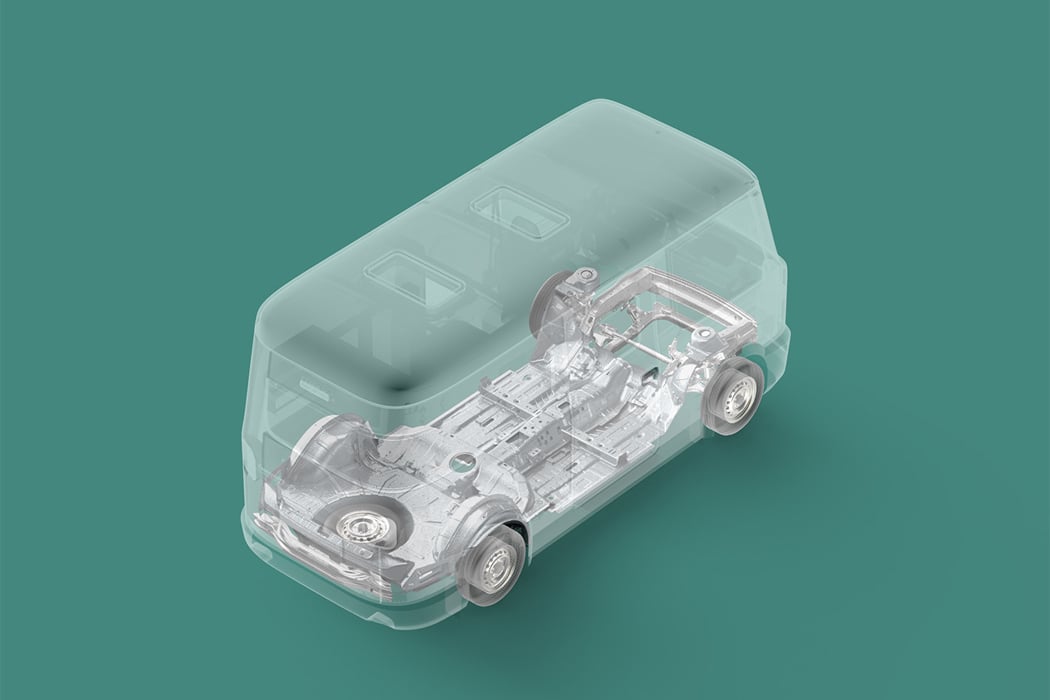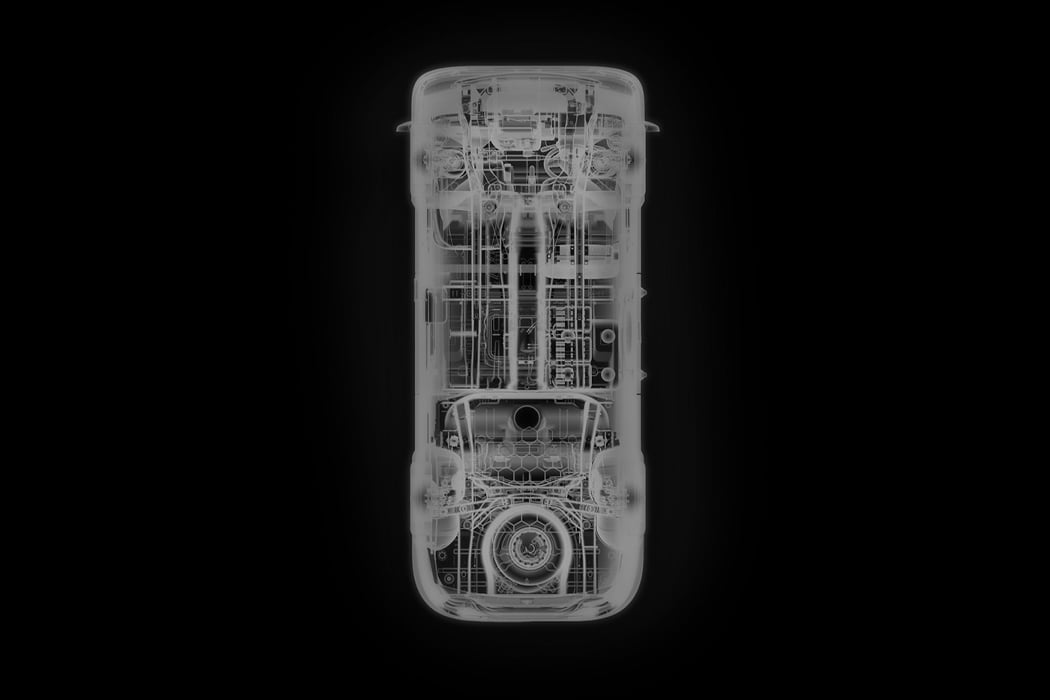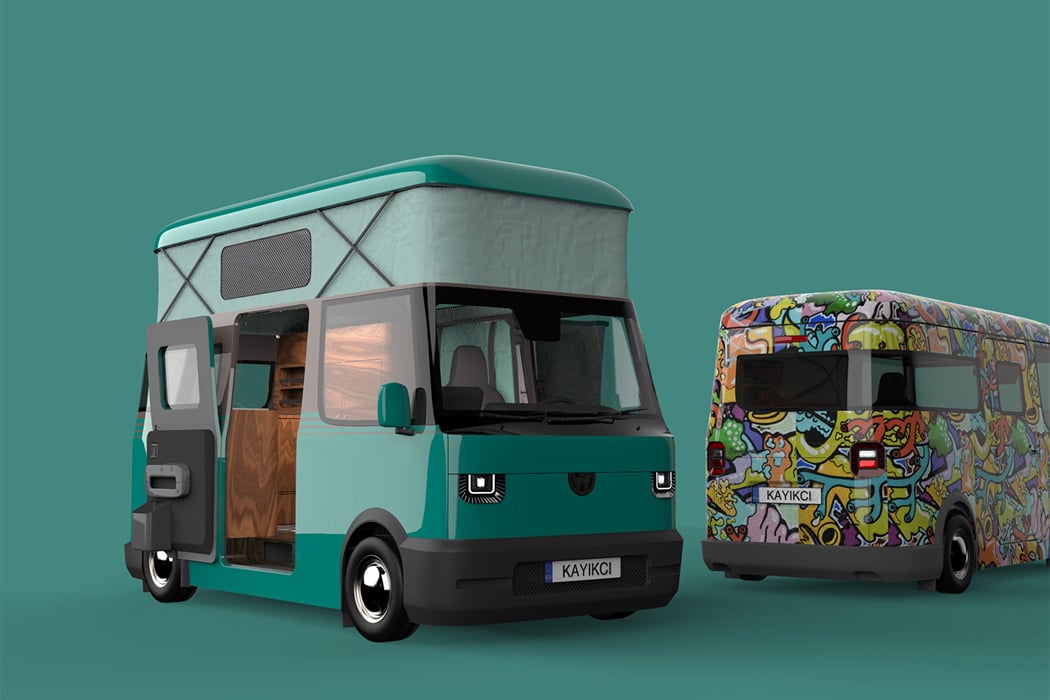
In many ways, the VW Bus ushered in the era of the mobile van camper. Inspired by its open interior, iconic pastel color schemes, and warm, rounded exterior‒designers have modeled their own camper vans after the VW Bus for as long as it’s been around to take us on trips. Taking the design language of Volkswagen and applying it to his own interpretation of the camper, design studio Ozan Kayicki visualized the Volkswagen Joy Camper.
Ozan Kayicki designed the Joy Camper to be the quintessential camping vehicle for all future trips. Rendered in either pine green or multi-patterned collage, Joy Camper is like the cube-shaped cousin to the VW Bus. The camper’s glossy painted exterior opens up to the van’s mostly wooden interior– a nod to the 1960s era of infinite wood panels. Each internal component is lined in wood, except for the driver’s seat, sink, and countertop, offering warmth in compliment to the van’s cool exterior. In addition to the van’s expansive, glazing windows that line the sides of Joy Camper, a pop-top roof raises the van’s headroom and allows additional sunlight to pour in through the roof’s skylights. Then, an additional extension protrudes from one side of the cabin, appearing as washing or changing areas for guests.
Camping is once more surging in popularity, which means a camper is on everyone’s Christmas list. Echoing back to the camper’s heyday in the 1960s, Ozan Kayicki’s Joy Camper takes cues from the classic VW Bus to visualize their own camper van, a simple, refined, and more mature cousin to its 1960s inspired predecessor– it’s never been this cool to be square.
Designer: Ozan Kayicki
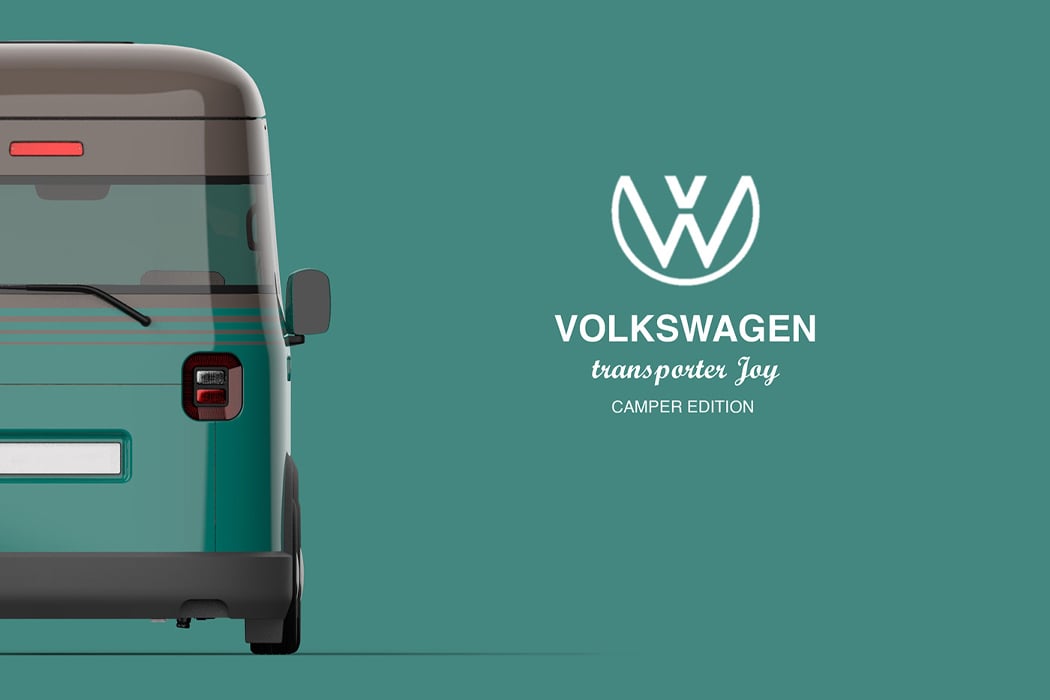
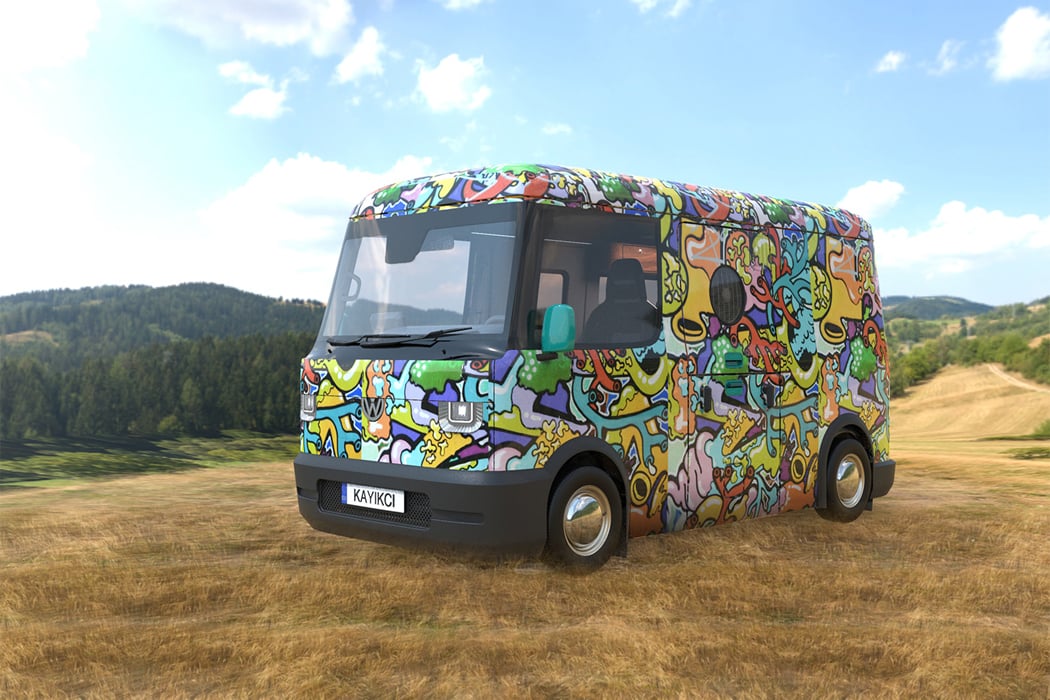
A multi-patterned collage exterior links Ozan Kayicki’s Joy Camper to the exuberant and eclectic design schemes of the ’60s.
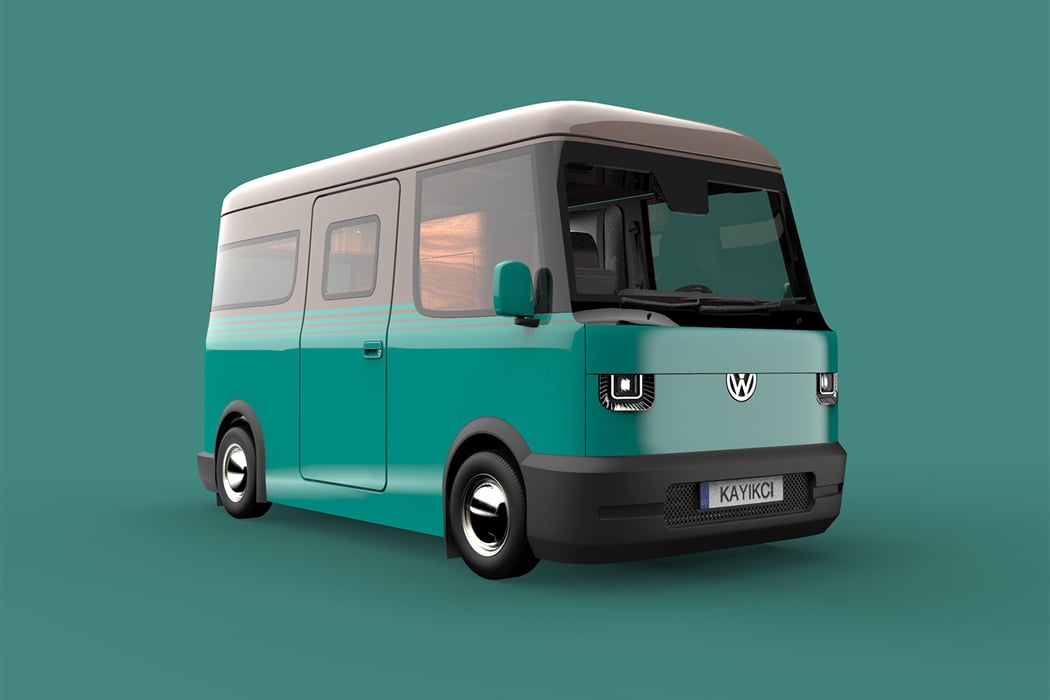
Opting for a more rectangular build, Ozan Kayicki’s Joy Camper steps away from the rounded edges of the VW Bus.
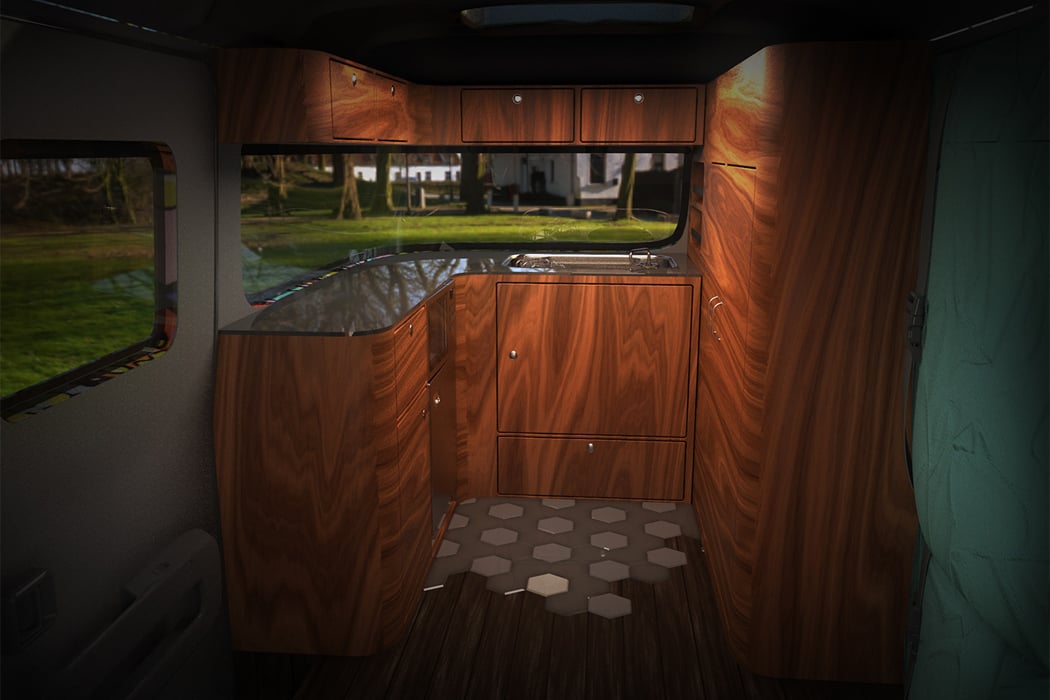
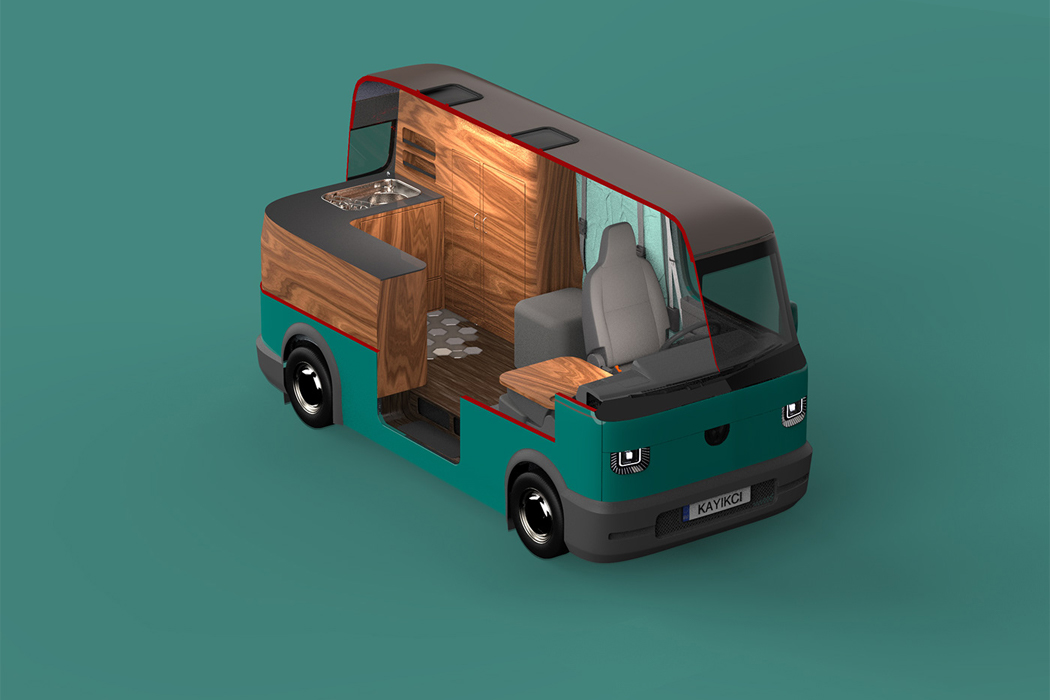
Inside, wooden components nod to the iconic wood panels made famous during the 1960s.
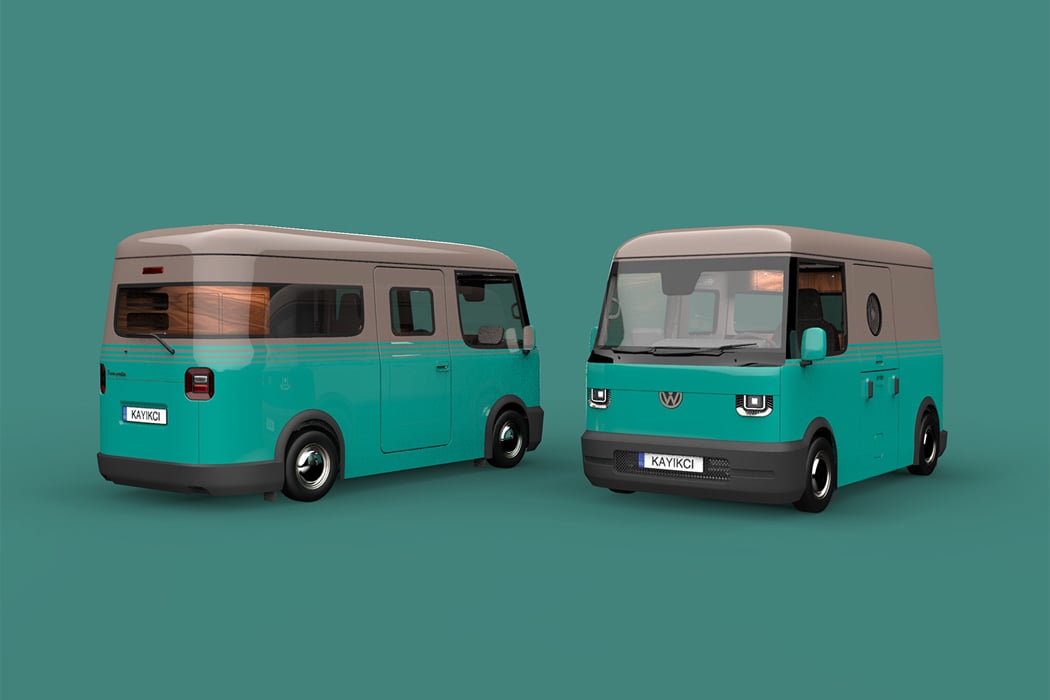
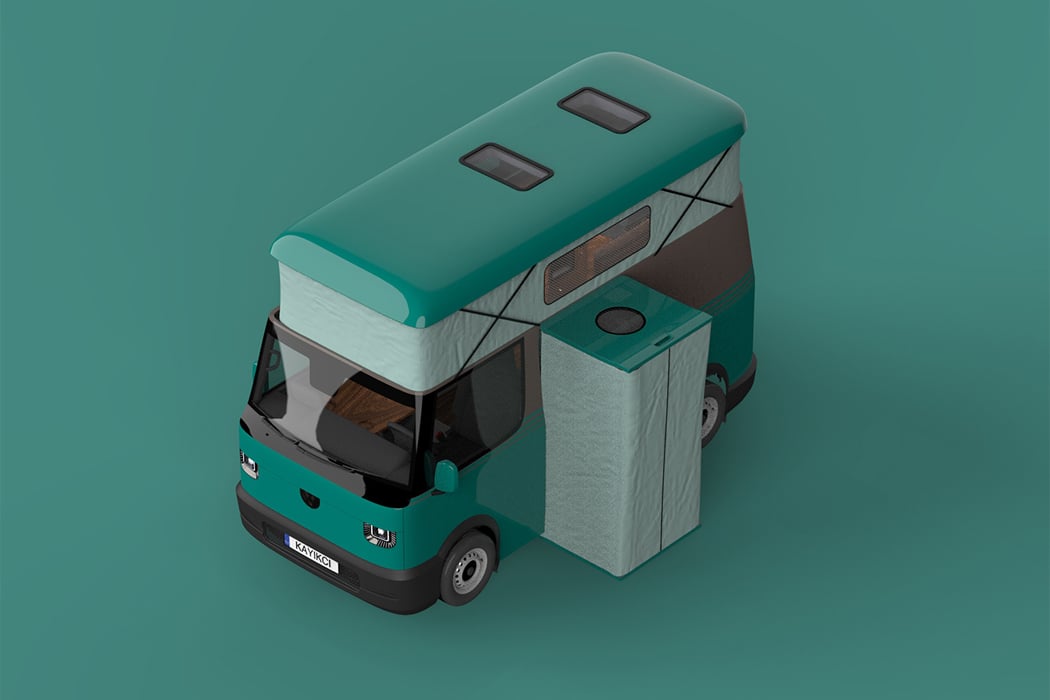
A pop-top roof extends Joy Camper’s headroom and brings in more natural sunlight during the day.
